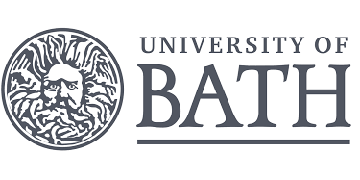University of Bath: Research to create new ultra-precise cutting tools and sensors for aircraft parts begins
A new generation of high-precision, low-cost sensors for future smart cutting tools are in development at the University of Bath.
The SENSYCUT project aims to create low-cost, nano-scale resolution sensors and cutting tools for machining operations of high value aerospace products, to increase precision, lower costs and prevent manufacturing errors. It has received a three-year funding package totalling £1.5M from the Engineering and Physical Sciences Research Council.
Principal Investigator Dr Alborz Shokrani, a Senior Lecturer in Bath’s Department of Mechanical Engineering and a member of the Advanced Design and Manufacturing Centre, says that new cutting-specific sensing technology is needed to achieve greater accuracy and deal with new manufacturing challenges, particularly in the aerospace and automotive industries.
The researchers say that currently, as much as 4% of aerospace manufacturing costs are spent on replacing cutting tools early, despite only 50-80% of a cutting tool’s life being effectively used. With a global market size of over $34bn for cutting tools, this wastage represents a huge opportunity for savings and improving the sustainability of machining.
Dr Shokrani says: “It’s has become received wisdom in industry that to machine a part like a landing gear for an aeroplane, you need a large, incredibly stiff machine to achieve the necessary precision, but the consequence of this is that machining costs grow exponentially in line with greater precision. This has resulted in the need for expensive and non-value adding verification and error compensation methods – which do not consider tool geometry, cutting forces and time-variable errors.
“The idea of sensors in cutting tools is not new but these sensor embedded tools lack the sophisticated data analysis amd decision-making capability that they truly require. They rely on technologies which are not tailored for cutting and are not integrated into the machining control system.”
Project co-investigator Dr Ali Mohammadi, from the Department of Electrical and Electronics Engineering, adds: “Existing high precision sensors are either too large or too costly to be useful outside of laboratory applications, and off-the-shelf sensors and data transmission devices are not necessarily suitable for monitoring or controlling machining processes. We aim to create a series of sensors specifically for machining that will help manufacturers improve quality without facing major cost implications.”
Dr Shokrani explains that additive manufacturing (3D printing) also created new challenges for cutting tools: “3D printing has helped us create more optimised parts with complex geometries, but these can require bespoke finishing with long slender tools. In these cases, cutting forces can bend the tool and the workpiece, resulting in undesired vibrations and geometrical inaccuracies. In turn, this damages surface integrity and shortens the life of tools. Better sensors and intelligent control systems could bring major benefits to all kinds of precision cutting applications.”

